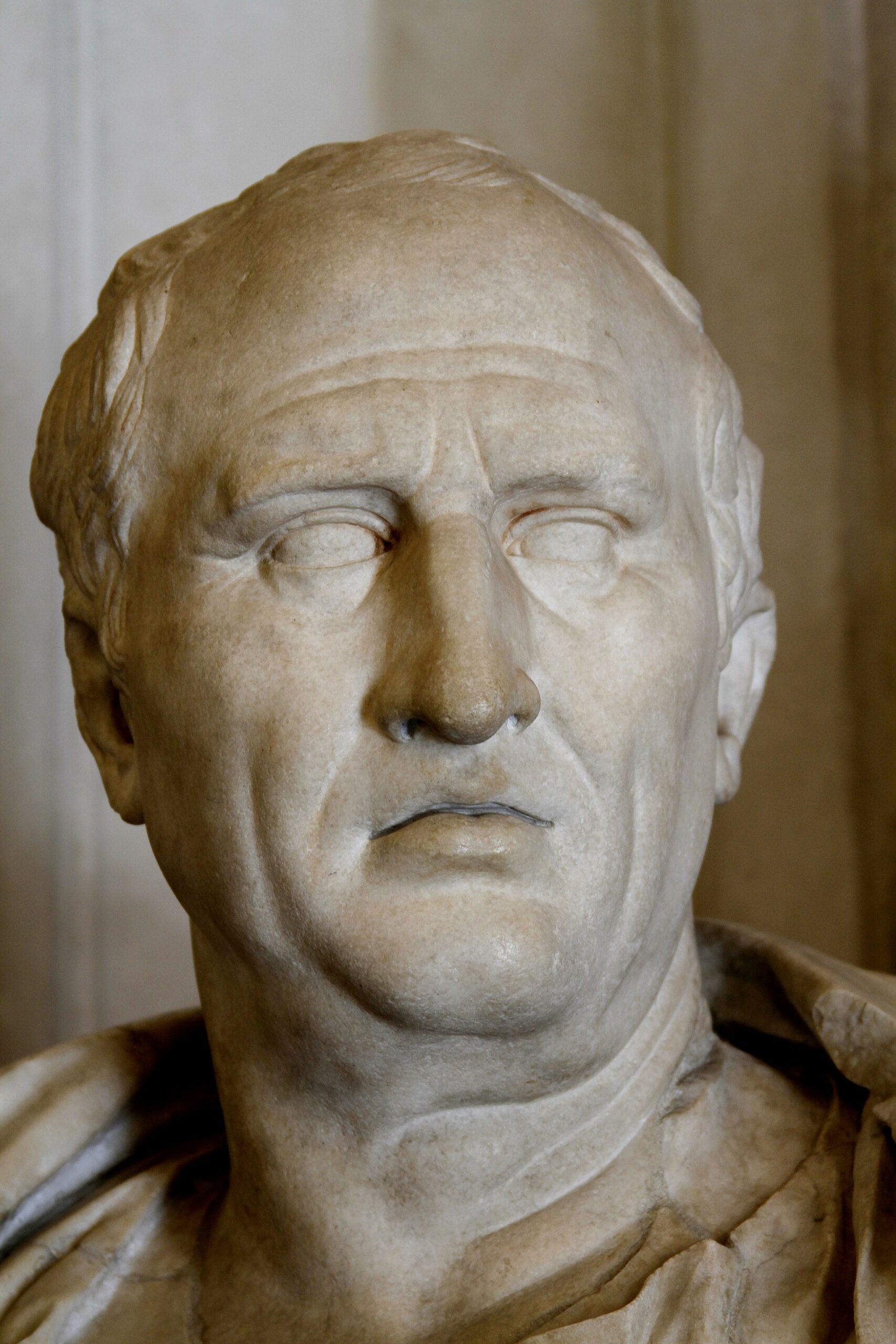Prof. Gerry Bradley, Co-Director of the James Wilson Institute and frequent contributor to Anchoring Truths, recently addressed the United States’ Religious Liberty Commission.
The commission, which President Donald Trump appointed Prof. Bradley to, is intended to foster pride in religion’s role in the US’s foundational history, identify threats to religious liberty, and promote religious freedom at home and abroad.
Please enjoy Prof. Bradley’s remarks below:
Thank you, Governor Patrick and Members of the Commission, for the opportunity to present these remarks.
The founders of the United States were pioneers of religious liberty. Unlike practically all societies before theirs, they eschewed top-down control of the people’s religion through princely imposition, or by the altar-throne deals common in Christendom, or by enforcing some eclectic civil religion. Or by all three, as in England ca. 1776. The idea here was political prosperity through religious unity. Unlike most free societies after theirs, our founders did not secure religious liberty by erecting what Richard John Neuhaus dubbed the “naked public square”, a secularized space from which religion is banished. The idea here is political prosperity without religion. This idea, opposed as it is to the founders’ idea as much as it was to King George III’s, was the Supreme Court’s mid-20th century point of departure, starting in earnest with the school prayer case in 1962.
The founders rejected those false alternatives. For them it was not either public religion without freedom orfreedom without public religion. They went all-in on both/and. They steadily maintained, in the words of the First Congress which wrote the Religion Clauses into the Bill of Rights, that religion was “necessary” to “the happiness of mankind and good government”.
America’s founders launched an epochal experiment in human rights and civil liberty, one which, by world historical standards, has been a singular success. I recall the closing lines of a great President’s Farewell Address to the Nation. I have in mind not Washington’s justly famous admonition that national morality depends upon religious principle. Rather, I am thinking of Ronald Reagan’s valedictory delivered on January 11, 1989. He said that for “the past few days… I’ve thought a bit about that `shining city upon a hill’”, a phrase adapted from Matthew’s Gospel by John Winthrop, whom Reagan described as “an early Pilgrim, an early freedom man”.
Look at any list of reasons why America has shone brightly. You will find a flourishing religious life, supported by freedom of religion, at the top of it. At least you should.
It has not been a story ever since of unbroken lineal progress. There have been setbacks and adjustments aplenty. We could, and should, talk about those episodic failures on another occasion. But the founders’ experiment has not failed, for it has shown itself time and again to be self-correcting: it has within it the resources needed to identify those episodes as failures, as unworthy of our founders.
The most vivid example has to be the Supreme Court’s correction of its 1940 holding compelling Jehovah’s Witnesses schoolchildren to salute the flag, just three years later in Barnette v. Board of Education. A much longer course correction involved nineteenth-century Catholics’ travails amidst Protestant worries about their loyalty and fitness to be democratic citizens. That struggle was, however, always about extending existing constitutional norms of religious freedom to faithful Catholics. And you can scour American history front to back and you will find not a single Catholic bishop who expressed anything less than admiration for the First Amendment. And nary a prominent Catholic thinker either, except maybe Orestes Brownson when he was having a really cranky day.
What emboldened our founders to blaze the path of religious freedom? They were political savants, to be sure. But they knew their history, too. They knew that the politically savvy move was to control religion from the top on down. Again: whence their extraordinary political courage? The founders’ trust in divine Providence is one reason. It was nothing like other leaders’ beliefs in “fate” or “destiny” or historical inevitability. Those are all, as my colleague John Finnis recently wrote, deterministic views of human affairs that radically diminish the role of human free choice. Providence is not like that. It is fully compatible with human persons’ free cooperation in God’s plan. Indeed, it presupposes that freedom: God helps those who help themselves.
The founders chose the epochal uncharted path, with eyes wide open.
Why?
Because they were convinced that government’s obligation to preserve and protect religious liberty is a true principle of justice and political morality. Freedom of religion is the only valid conclusion one could draw from a series of truths they held most firmly, though not, as a matter of fact, “self-evidently”. Call this nest of propositions “the moral foundations of religious liberty”.
Where shall we look for a compact expression of them?
To the founding generation’s pre-eminent guide to constitutional meaning, to the guiding force behind our First Amendment, and to the author of what commentators and Supreme Court Justices liberal and conservative alike have treated as the Magna Carta of American religious liberty. I speak not of three men but of one: James Madison, and his 1785 Pamphlet against a Virginia tax for ministers, “The Memorial and Remonstrance” — and the very first paragraph of it.
Madison wrote there that religious liberty is not about the sovereignty of the human person, what we might call “subjective right”. Much less did he have in mind the idiosyncratically creativity of the Supreme Court’s infamous “Mystery Passage” in the now overruled case of Planned Parenthood v. Casey. There was a “sovereign” in the founders’ picture, an omniscient and good one: “Before any man can be considered as a member of Civil Society”, Madison wrote, “he must be considered as a subject of the Governour of the Universe”.
This “subject” is not for Madison a law unto himself. Religious liberty is an “inalienable” right, according to Madison, “because what is here a right towards men, is a duty towards the Creator.” This obligation is not like other important moral duties, which one fulfills by not doing something. This duty is a much heavier lift. It is “unalienable” for a second reason: “because the opinions of men, depending only on the evidence contemplated by their own minds, cannot follow the dictates of other men”. Freedom of conscience is not a license for indifferentism. It is an overriding call to knuckle down and get serious, to do some very hard thinking.
Central to religion is one’s conscientiously judging what is the case about ultimate matters — and then acting accordingly. This obviously can only happen if people are free of coercion and manipulation. Madison concluded that “It is the duty of every man to render to the Creator such homage and such only as he believes to be acceptable to him.” – lower case “h”; that is, acceptable to the one who would give homage. It is a duty that can only be fulfilled by the free thought, judgment, decision and action of each human individual. No one can perform it for you. If you don’t do it, it won’t get done.
Note well: these moral foundations were not held by the founders as truths of religion. That was what the denominations and sects were about: revealed doctrines, the deliverances of prophets and sacred texts, ceremonies and charisms and church precepts. The moral foundation of religious liberty comprises truths about religion — about divine realities, human intelligence and free choice, and the political common good. These the founders thought to be truths accessible to unaided human reason, matters really of philosophy.
As they are.
There can therefore be no sound argument that recovering the moral foundations of religious liberty amounts to some sort of religious establishment. We should not suppose that Madison, for example, was foolish enough to argue for religious liberty — as he did in the “Memorial and Remonstrance” — on grounds that would call for a religious establishment!
The founders resolved to let the spirit of human inquiry and judgment blow where it wills because they were obliged to do so. “Obliged” not by force majeure or by any revelatory act of God within human history. Rather, they were “obliged” by “reason and conviction”. They were compelled by truth.
The founders were political theorists enough to recognize these two entailments of what they wrought: first, unleashing the potentially centrifugal force of felt spiritual imperatives is risky, so risky that no polity before theirs ever did so; second, in a free society like ours the restraint necessary to good order has to come from the character and virtue of the people, not from governmental dictates. At the intersection of these two lines of thought stood religion. The founding generation all-but-universally held that the political commonweal depended upon the piety of the people. This is the message, not only of Washington’s aforementioned Farewell, but of John Adams, Thomas Jefferson, and of just about everyone else. This pervasive judgment is not quite a “moral foundation” of religious liberty. Think of it as a “morally adjacent” truth of political wisdom.
Note well once more: none of this is about what we call “civil religion” or “ceremonial deism”, concepts that would have been incomprehensible to the Founders. It is not about any such imposter or whited sepulcher.
Someone might re-heat an anti-establishmentarian objection and serve it up here: these affirmations, they might say, lack the “secular” purpose required for every government action. This was indeed a demand, for a season, of the Court’s late and unlamented Lemon test, a gigantic mistake which Justice Scalia thirty years ago likened to a “ghoul in a late night horror movie that repeatedly sits up in its grave and shuffles abroad, after being repeatedly killed and buried.”
The “secular-purpose” claim is, in any event, question-begging wordplay. “Religious” and “secular” are antonyms, you see, so acting for the sake of “religion” simply cannot be a “secular” purpose even if and when it opens onto what we could call “secular prosperity”, in a wide sense. Let’s instead work with the founders’ words and concepts. They were keenly, and fearfully, aware of the divide between this passing vale of tears and a “future state of rewards and punishments” (their ubiquitous term for an end state of cosmic justice). But the founders never used the term “secular” when they talked about religion and the polity; the closest they came was probably references to what they named “worldly” activities – mostly forbidden – on the Sabbath. For them proper governmental care for the temporal common good of the polity included encouragement and help for religion, albeit always respectful of persons’ freedom and churches’ autonomy. Deploying the word “secular” adds nothing to the discussion.
It is probably worth noting hereabouts that atheism was not a publicly sustainable position in America until sometime after the Civil War, when – as James Turner writes in his excellent book, Without God, Without Creed – “Robert Ingersoll, the Atheist” hit the lecture circuit. People paid good money to hear his novelty act.
********************
I have not so far spoken specifically about constitutional interpretation of the First Amendment. I should like to close by noting two takeaways from these remarks pertinent to that discipline. One is this: it is folly to think one can jettison these moral foundations with its moral adjacent and remain faithful to anything like the original understanding of the Religion Clauses. The other is that, no matter what is true with other constitutional provisions, here, at the keystone of our constitutional civil liberties, there is no need for the contemporary interpreter of the constitutional language to choose between historical recovery of plain meaning and what surely appears to be the moral truth of the matter. In the case of the Religion Clauses, the founders wove truth into the text in a tapestry for the ages.







